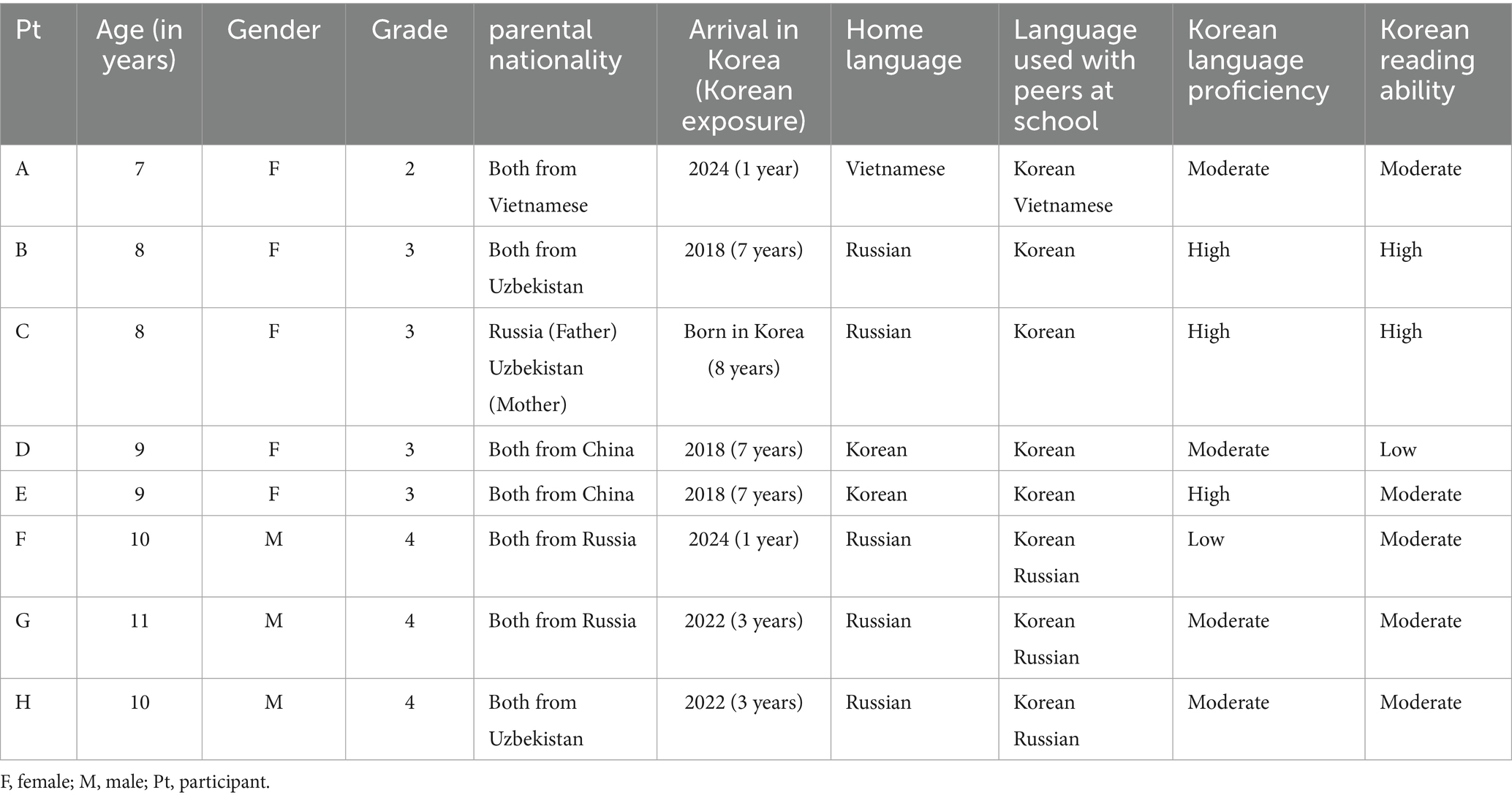Report on Eastern Michigan University’s New Early Childhood Education Program and its Contribution to Sustainable Development Goals
Introduction
On October 23, 2025, the Eastern Michigan University (EMU) Board of Regents approved a new Bachelor of Science in Early Childhood Education. This fully online program is designed to provide a pathway for initial teacher certification with a Birth–Kindergarten General and Special Education endorsement. The initiative directly supports several United Nations Sustainable Development Goals (SDGs), primarily focusing on ensuring inclusive and equitable quality education (SDG 4) and promoting sustained, inclusive, and sustainable economic growth (SDG 8).
Program Alignment with Sustainable Development Goals
The program’s design and objectives demonstrate a strong commitment to advancing key SDGs:
- SDG 4: Quality Education: The program directly addresses Target 4.2, which aims to ensure that all children have access to quality early childhood development, care, and pre-primary education. By training and certifying a new cohort of educators, it also supports Target 4.c, which focuses on increasing the supply of qualified teachers. The curriculum’s emphasis on inclusive classroom practices and special education further promotes equitable educational opportunities for all learners.
- SDG 8: Decent Work and Economic Growth: By offering a flexible online format, the program enables current early childhood professionals to upgrade their qualifications and advance their careers while remaining employed. This contributes to Target 8.5, achieving full and productive employment and decent work for all. The program is a direct response to Michigan’s “Pre-K for All” initiative, addressing a specific labor market need for an estimated 1,700 additional preschool teachers by 2027.
- SDG 10: Reduced Inequalities: The 2+2 program structure provides an accessible higher education pathway for individuals who have completed an associate degree, reducing inequalities in access to professional advancement. Its focus on preparing educators for both general and special education settings ensures that future classrooms are better equipped to serve children with diverse needs.
Program Structure and Curriculum
The program is structured to bridge educational theory with practical application for working professionals.
- Target Audience: Designed for students who hold an associate degree in early childhood education or a related field and are currently employed in an early childhood setting.
- Format: A fully online, asynchronous model allows participants to complete coursework while maintaining full-time employment. Fieldwork requirements can be fulfilled within the student’s current workplace.
- Credit Hours: The program consists of 64 credit hours.
- Core Curriculum Areas:
- Early literacy
- STEAM (Science, Technology, Engineering, Arts, Mathematics) education
- Inclusive classroom practices
- Early childhood special education
Implementation and Projected Impact
The program is set to launch with its first cohort in the fall of 2026. Initial enrollment is projected at approximately 20 students, with an expansion plan to accommodate over 120 participants within a three-year period. This initiative represents a strategic effort by Eastern Michigan University to strengthen Michigan’s early learning workforce, contributing to the state’s educational infrastructure and supporting the long-term goal of providing quality pre-kindergarten education for all children.
Which SDGs are addressed or connected to the issues highlighted in the article?
Detailed Explanation
-
SDG 4: Quality Education
This is the most prominent SDG addressed in the article. The entire text focuses on the creation of a new Bachelor of Science in Early Childhood Education program. This program directly contributes to improving the quality of education by preparing “high-quality educators.” It specifically targets early childhood education (Birth–Kindergarten), a critical foundation for lifelong learning, and aims to increase the supply of qualified teachers to meet the state’s needs.
-
SDG 8: Decent Work and Economic Growth
The article connects to this goal by focusing on workforce development and employment. The program is designed for working professionals, allowing them to “continue working full-time while completing their bachelor’s degree.” It aims to help participants “advance their credentials” and “get hired upon graduation,” thereby contributing to productive employment and career advancement within the education sector.
-
SDG 10: Reduced Inequalities
This goal is addressed through the program’s emphasis on inclusivity. The curriculum includes “inclusive classroom practices, and early childhood special education,” which prepares teachers to support learners with diverse needs, including children with disabilities. Furthermore, the “fully online program” format enhances accessibility to higher education for individuals who may face geographical or time-based barriers, thus reducing inequality in access to professional development.
What specific targets under those SDGs can be identified based on the article’s content?
Detailed Explanation
-
Target 4.2: By 2030, ensure that all girls and boys have access to quality early childhood development, care and pre-primary education so that they are ready for primary education.
The article directly supports this target by creating a program to train educators for this specific level (Birth-Kindergarten). The program’s alignment with Michigan’s “Pre-K for All” initiative is a clear effort to expand access to pre-primary education by addressing the teacher shortage.
-
Target 4.c: By 2030, substantially increase the supply of qualified teachers.
The article’s central purpose is to address this target. It explicitly states that the program is a response to “Michigan’s growing demand for early childhood educators” and the state’s goal to “recruit more than 1,700 additional preschool teachers by 2027.” The program is a direct mechanism to increase the number of certified teachers.
-
Target 8.5: By 2030, achieve full and productive employment and decent work for all women and men… and equal pay for work of equal value.
The program contributes to this target by providing a clear pathway for career advancement. It allows individuals with an associate degree to “advance their credentials” to a bachelor’s degree, which typically leads to better job security, higher pay, and more opportunities for “decent work” within the education profession.
-
Target 10.2: By 2030, empower and promote the social, economic and political inclusion of all, irrespective of… disability… or other status.
The program’s coursework in “inclusive classroom practices, and early childhood special education” directly addresses this target. By training teachers to work in “inclusive and special education settings,” it helps ensure that children with disabilities are included and supported from the very beginning of their educational journey.
Are there any indicators mentioned or implied in the article that can be used to measure progress towards the identified targets?
Detailed Explanation
- Number of qualified teachers: The article provides a direct, quantifiable indicator related to Target 4.c. The state’s goal to “recruit more than 1,700 additional preschool teachers by 2027” serves as a specific measure of progress for increasing the supply of qualified teachers.
- Number of program participants/graduates: The article implies a clear indicator for measuring the program’s own contribution. It projects an initial cohort of “approximately 20 students” and an expansion to “more than 120 participants within three years.” Tracking the number of students who enroll and graduate from this program would measure its direct impact on the teacher supply.
- Employment rate of graduates: The article states that the program is designed to “help students get hired upon graduation.” An implied indicator, therefore, is the employment rate of the program’s alumni in the early childhood education field. This would measure the program’s success in contributing to Target 8.5.
- Number of teachers trained in inclusive education: The program’s focus on “inclusive classroom practices, and early childhood special education” implies an indicator related to Target 10.2. The number of graduates who receive certification with a “General and Special Education endorsement” can be measured to track progress in preparing the workforce for inclusive settings.
SDGs, Targets, and Indicators Table
| SDGs | Targets | Indicators |
|---|---|---|
| SDG 4: Quality Education |
4.2: Ensure access to quality early childhood development and pre-primary education.
4.c: Substantially increase the supply of qualified teachers. |
– The success of the state’s “Pre-K for All” initiative.
– The number of additional preschool teachers recruited (State goal: 1,700 by 2027). |
| SDG 8: Decent Work and Economic Growth | 8.5: Achieve full and productive employment and decent work for all. | – Employment rate of program graduates in the early childhood education field. |
| SDG 10: Reduced Inequalities | 10.2: Empower and promote the social, economic, and political inclusion of all, including persons with disabilities. | – Number of graduates with a “General and Special Education endorsement” prepared to work in inclusive settings. |
Source: today.emich.edu







